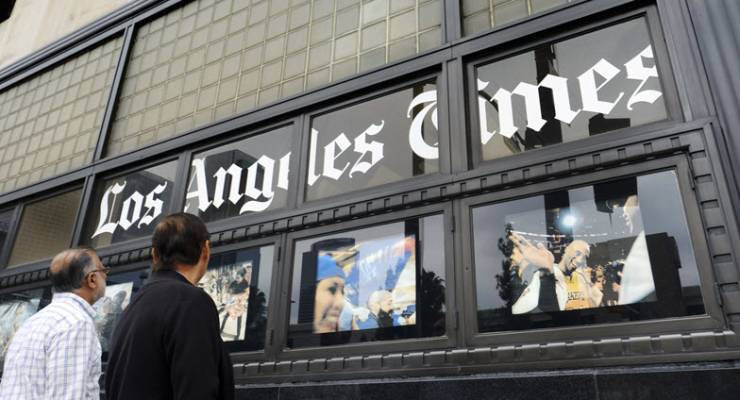
A media-wide frisson greeted the news last week that America’s fourth largest paper, The Los Angeles Times had been bought by yet another tech billionaire whizz.
Health tech entrepreneur Patrick Soon-Shiong paid about AU$750 million to take the southern Californian papers, The Los Angeles Times and the San Diego Union-Tribune, out of American journalists’ least favourite media chain, Tronc. Soon-Shiong has joined his fellow tech-billionaires Jeff Bezos and John Henry in getting a trophy newspaper as papers become like sporting franchises — something of a toy for the newly mega-rich.
The stock market loved it, showing yet again that the hazy hope for a fairy god-parent buying up media companies is embedded in their market capitalisation — both in the US and in Australia. The heavily indebted Tronc will slash its liabilities by more than half, leaving shares in the smaller, residual company worth more than before the split. The paper’s staff — who voted overwhelmingly to unionise the previously militantly non-union paper in January — cautiously welcomed the sale. The paper’s guild said it “looks forward to working with a local owner who can help us preserve the Times as a guardian of our community and as the voice of the American West.”
The three billionaires now each own one of the three largest regional papers in the US, with Jeff Bezos (Amazon retail tech) buying The Washington Post for $250 million in 2013 and John Henry (who made his money with algorithmic trading fintech) buying the Boston Globe for $70 million the same year. Although the LA Times is larger than either the Post or the Globe (and comes with the Union-Tribune), these figures look like Soon-Shiong paid over the odds.
For two of the billionaires, the newspapers sit alongside sporting franchises. Soon-Shiong is already a significant holder of the LA Lakers basketball team. Henry owns the Boston Red Sox and Australia’s favourite English soccer team, Liverpool.
Australia had its own flirtation with (at least claimed) billionaire ownership in commercial television during the 1980s with later fugitive Christopher Skase (Seven), former house painter Alan Bond (Nine) and recently cashed out retailer Frank Lowy (Ten). It all ended in tears within four years with all three networks in receivership as a result of debt the takeovers involved. Similarly Robert Holmes à Court briefly ended up with The West Australian in 1987, before it went to Bond. But in the age of the advertising rivers of gold, the cash flow of newspapers (like breweries) made them valuable investment for highly leveraged speculators.
Now, as far as we can tell, the billionaires are paying cash from their own resources, removing the debt pressure that has done so much damage to Tronc since earlier billionaire Sam Zell bought it as Tribune Media in 2007. Both Bezos in Washington and Henry in Boston have made it clear that they are not a magic pudding for business as usual. The papers are expected to pay their way. But patient, private ownership has given both the Post and the Globe an opportunity to focus on journalism.
The Post has invested resources in data reporting as it rebuilt its dominance in the politics vertical — where Trump has been the gift that keeps on giving, journalistically speaking. As a result, the Post has been able to break out of its region and now claims to have over 1 million digital subscribers. But what of the Times? Given that southern California is about the same population as Australia, our media will be watching to see if they can re-build a viable regional product with that market.
Or will it build an international vertical out of its famed media and entertainment industry coverage? And are there technological synergies from Soon-Shiong’s NantWorks health tech group? These benefits were trumpeted when Soon-Shiong bought into Tronc in 2016 although none have yet materialised.
And how will the paper cover its owner? All billionaires bring their own baggage and The Washington Post has already written up a Soon-Shiong controversies listicle.
In the meantime, as Australian media shareholders digest the end of 2017 financial results, they’ll be wondering when their magical billionaire buyer is going to turn up.








Huh? What’s a ‘newspaper’?
Well the search for Truth and dissemination of facts in the Benighted Statesis clearly in good hands.
If’n ya caint trust a billionaire, who can ya..?